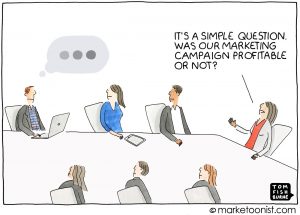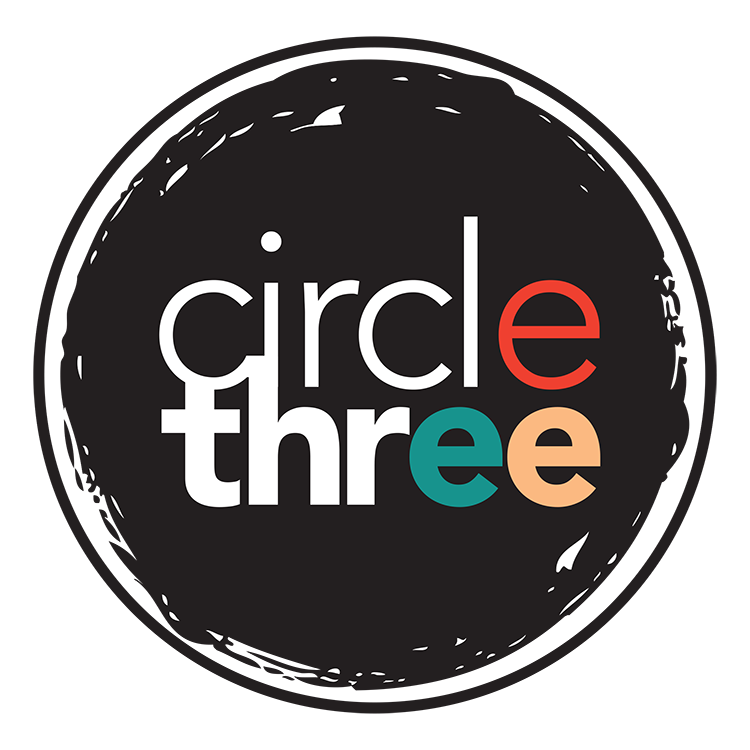A reader asked: “What choice of media gets you the best bang for your buck?” That is a complicated question. It depends on the medium you choose, your target demographics, the service you are trying to promote, and your overall brand strategy. The simple answer is that it is going to vary for each company and the way you choose to market. No one size fits all, but following are some tactics to help you make the right decision for your business.
Event season is right around the corner and whether you are exhibiting at massive trade shows or a simple county fair, the question remains the same: what is the return on investment? While marketing does rely on some intangible factors, you will be able to measure the return on your investment (ROI) for many of your marketing endeavors. Special events tend to be the trickiest to measure: there seemed to be some interest in what you had to offer, but did it justify the expense? You should ask that question for any type of marketing you do.
The answer lies in the data you collect, the type of ROI model you choose to measure it with, and how potential leads fit into your sales funnel. It also requires you to examine how you do business and evaluate the marketing you have done in the past.
Data Collection
Let’s say you are thinking about doing another radio ad. You know how much it costs and you know how many new customers you need to attract in order to justify it, so what system have you put in place to measure the new business coming from this ad? If you are like many, that question may cause you to draw a blank. It does not have to—it just requires that you do a little planning so that you can collect the data.
Develop your message with tracking in mind. Add a promo code to your radio script that is unique to this ad. Require your customer service representatives to ask new customers how they heard about your company or make a new field on your web form that asks them to select how they found you. Regardless of the way you choose to identify which leads come from your marketing campaign, be sure that this data is collected. Make a unique identifier for it in your Customer Relationship Management software so that you can pull reports on the leads that came from your campaign. You will want to evaluate the success of the campaign now and track these customers throughout their lifetime.
 Types of ROI Models
Types of ROI Models
Once you have some data collection mechanisms in place, the next step is to determine how you will evaluate it. There are several different ways you can measure return on investment. Not all show a direct impact on sales. “Of course, the number most CEOs and managers have traditionally wanted to see is immediate sales generated by marketing activity. That is a bit of a short-term mindset: pushing messaging at customers to make a quarterly buck, without care for the long-term relationship potential” (Peter Friedman, LiveWorld). You may find yourself in a situation where you can, indeed, get direct sales on the spot with your marketing tactics. If so, bravo!
Take advantage of this when you can, but remember the bigger value is on the long-term relationship with that customer. A large uptick in sales due to a new campaign looks good for now, but if you do not deliver on what your brand messaging promises or the new customers were not the right demographic for you and most of them end up canceling their subscriptions within a year, that increase in sales does not mean much and you may have wasted your marketing dollars.
Identify which ROI model works best for the marketing tactic you are using and for your overall business goals. You may find that combining different ROI models gives you the best outlook on performance and where you will get the most bang for your buck.
- Sales Statistics
This is a simple one: is your campaign leading to direct revenue? How about sustained growth over the lifetime of the customer? Ask yourself how this particular ad attracts new customers, if you will be able to retain these new customers and if the lifetime relationship justifies the cost of what you would like to do. It is a good measurement to apply when you are able to, but it will not always be so black-and-white. You might be struggling to illustrate a direct return on investment and that is where the following types of measurements can help. - Social Statistics
Social media campaigns are a good example of extremely measurable ads—there is data for everything. You can measure the number of fans you have or the amount of likes your campaign received. However, social statistics are considered vanity metrics. It makes you feel good to see that your ad received a large number of likes, but you cannot take likes to the bank. There are places for social statistics when it comes to understanding your brand’s performance in the digital realm and overall brand building, but it may take quite some time to see fans convert to sales. - Marketing Statistics
You may choose to measure your ROI in terms of brand awareness. If your company or offering is the underdog or occupies a niche space, brand awareness might be a business goal for you. If that is the case, you will want to pair this type of statistic with an even higher-value goal. For example, you may be satisfied with an ad that showcases your brand in order to let people know you exist—and that is great—but consider including some call to action that encourages people to submit their e-mail address to download something like a handy guide on recycling best practices (or whatever is appropriate). If they are not in the mindset to buy right away, you have the opportunity to nurture those leads and supply them with additional content because you now have their e-mail addresses. - Marketing Equivalency Statistics
This model requires measurement of old tactics compared to new ones—and a bit of hindsight. You have to have done the types of marketing you want to compare things to, and you have to have measured it so you have some data. You simply measure the cost of a marketing campaign and the number of leads or sales that it generated and compare those results to how much you would have to spend to achieve the same thing in other forms of media. For example, a boosted Facebook post that costs $100 may have brought in “X” leads. How much would you have had to spend in radio ads to generate the same amount of leads? How about trade shows? - Insight and Relationship Statistics
This is one of the more nebulous forms of ROI. What is the value of human interaction? If you could sit down with a number of your customers or potential customers to gather actual data, product or service feedback, and insight into their buying trends or business challenges, wouldn’t you jump at the chance? Some events, like trade shows, provide the opportunity to build relationships with your customers. You can gather feedback and develop loyalty. The challenge lies in measuring this. Perhaps you can quantify the value of the feedback provided and demonstrate how much you would have had to spend to learn this information otherwise.
Consumer education might be your goal—especially for haulers attending local events. Perhaps you chose to sponsor a booth at your county fair in order to simply show support for the community. Many of the attendees might already be your customers. If that is the case, identify what else you aim to accomplish with your booth beyond community support and attracting new customers (since the odds of this are low). Recycling contamination is a hot issue. You could make recycling education your mission and aim to talk to people about the dangers of “wish-cycling.” This also gives you a chance to interact with potential and current customers and get feedback.
 Sales Versus Marketing
Sales Versus Marketing
Now that you plan to collect the data and have a way to measure it, you also need to identify what goes right or wrong. Let’s say you set up a small booth at an event with a bowl on a table. In order to gather potential leads, you encourage visitors to fill out a form and put it in the bowl with the promise that there will be a prize drawing. At the end of the show, your marketing team is proud: 100 lead forms were completed! If only 10 percent of those leads turn into paying customers, it will more than demonstrate a return on investment for this event. A month later, however, the sales team reports that only 1 percent of those leads were converted into customers. What happened? From the marketing point of view, the event was a total success. From the sales perspective, it was a flop. It turns out that there is way more to the story.
It is often necessary to decouple the sales and marketing departments and make each team responsible for their own portion of the equation when it comes to determining ROI. So much can happen between lead acquisition and lead conversion. You want to be able to identify where in the process the lead went cold. Get your sales team and marketing team to work together to support your company’s goals but keep them separately accountable. This is where you want to evaluate how an ad, event, or campaign feeds into your sales funnel and the various touch points and timing that lead to conversion. For the sample above, ask yourself:
- Were my target demographics at this event?
- Was my booth and messaging targeting the right people?
- Were they serious leads or just opting in for the chance to win a prize?
- Were the leads validated and contacted quickly?
- Were they provided with the right information at the right time?
- What options where they given to convert?
Based on the answers, you can identify where things started to fall apart. Perhaps the event was the wrong choice to attend. Maybe the customers were willing to convert on the spot, but were not given opportunities to sign up for service. It could have taken too long to contact them, and they had already chosen a different solution for their needs. Identifying these issues gives you that insight to determine if a campaign is successful or not and if you have any internal issues that prevent you from realizing the return on investment from a successful campaign.
What Makes Sense for You
If you are not already collecting the data on your marketing and measuring it to determine ROI, this can seem like a lot of work and you might feel paralyzed about what to do next. Marketing opportunities are going to come and go whether you are ready or not, so take advantage of what makes sense for you now and aim for incremental improvement as you go. The final advice is always going to be the same: understand who your customers are and where they hang out and then communicate with them in ways that build your brand and meet your company’s goals.
This article was written by Jessica Shrout for the April 2019 issue of Waste Advantage Magazine.

